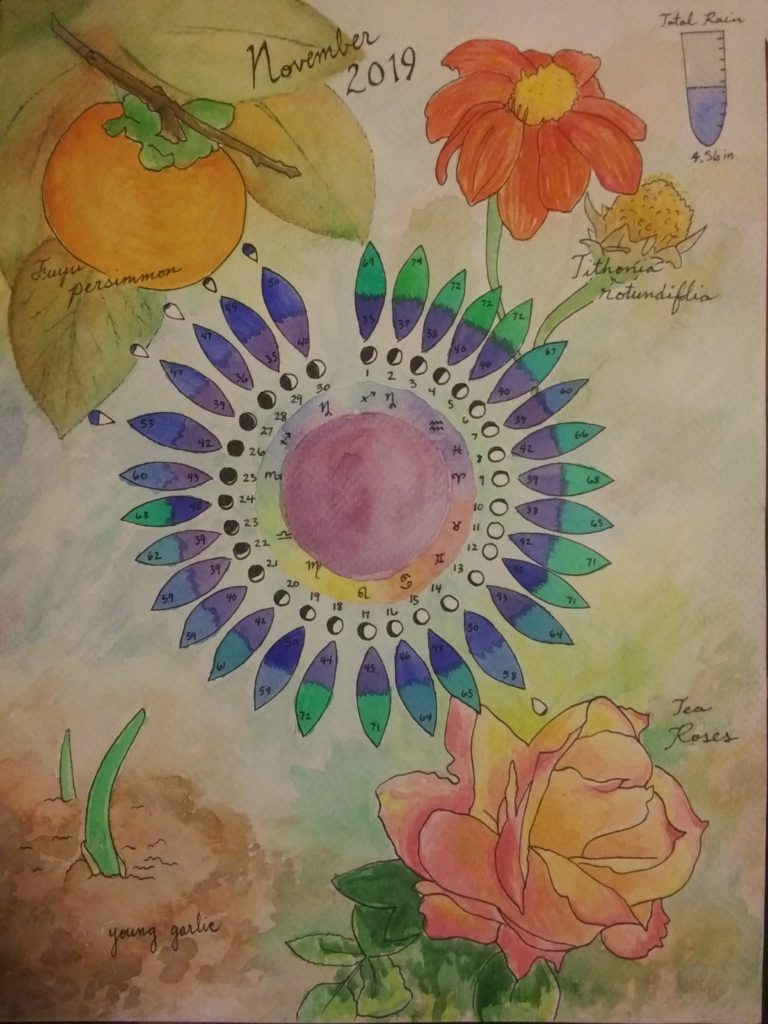All around us, things are constantly changing. Spring rains come and bring new flowers, baby birds are hatching from eggs, and new green leaves emerge on trees. Can you think of some ways you have observed changes in nature?

- Phenology is the study of cycles and patterns in nature. You can practice phenology by making observations in nature and noticing how things change over time! Create a phenology wheel of your own as a tool to record your observations about a natural phenomenon in your own life!
- A phenology wheel is simply a way to keep track of the observations you are making about your chosen subject in nature.
- Here is a detailed guide for creating your own wheel.
- Or you can use this template!
- To use the wheel, spend some time making observations in nature for a day, week, month, or even an entire year! You can focus on one species or a special spot outside your window or place of your own choosing
Here are some prompts to help inspire you to create your own wheel! Check out the detailed guide below for even more ideas.
- Look outside your window each day for a week. What do you notice? What has changed?
- Look up at the sky! Each night, record your observations of the moon throughout its phases on your phenology wheel.
- What’s the weather? Track the weather where you live for a week/month/year.
- Do you see any animals regularly near your home? Such as a bird? What do you think it is doing?
Watch our Phenology Wheel Video.
Post by Ellen

